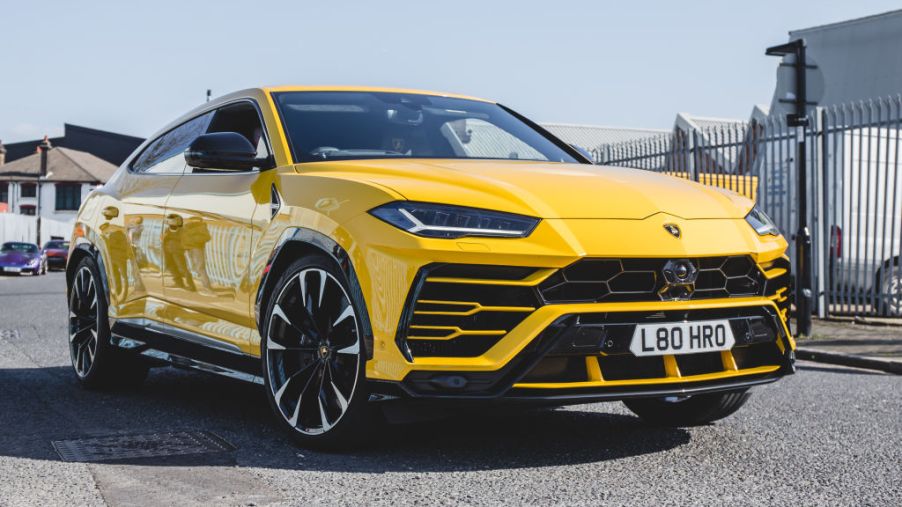
Lamborghini Urus Proves Too Popular
During the ’50s, when founder Ferruccio Lamborghini was crafting his first production models, he wanted to set his vehicles apart by designing the cars for peak performance on streets and roads, rather than the track. This bet against track-oriented brands, such as Ferrari, paid off in a major way, and Lamborghini cars continue to be collector’s items for enthusiasts to this day.
One of the most appealing parts of owning a Lamborghini is the ultra exclusivity of the brand. From the beginning, Lamborghini has capped its production numbers of each model that it produces, making it extremely difficult to own these vehicles, even if you’re lucky enough to have the cash in your hand.
For this reason, Lamborghini ownership has often been reserved for elite members of car collecting circles. Earlier this month, Motor1 reported that Lamborghini is planning on capping the production numbers of its Urus SUV, which was introduced in 2017.
The popularity of the Urus SUV has placed Lamborghini into an interesting conundrum, which may force the automaker to slow down the production of its most popular model.
The Lamborghini Urus redefines luxury
In order to understand the incredible popularity of the Lamborghini Urus, it’s important to look at how this model has completely redefined the Lamborghini lineup. For decades, Lamborghini supercars were epitomized by its long, low profiles and lean interior cabins, which were aerodynamically engineered to maximize speed and minimize drag.
When Lamborghini came out with its Urus SUV, it suddenly launched into the incredibly popular luxury SUV segment and created steep competition with other high-end SUV models, such as the Bentley Bentayga or Rolls-Royce Cullinan.
The Urus’ unmistakable exterior style is matched by its performance. The exterior body panels are bolstered with ultra-light carbon fiber technology, making the Urus extremely light, despite its large size.
This super SUV is powered by a 4.0-liter turbocharged V8 engine, which puts out an impressive 641 horsepower. All-wheel drive technology also allows the Urus to retain traction under off-road conditions. However, it’s hard to speculate a case when you would want to take this high-end car off the pavement.
Smashing sales records after the Urus release
Prior to the production of the Urus, Lamborghini had experienced a noticeable drop in international sales. While its iconic Huracan and Aventador models were still selling, auto enthusiasts were looking for something new and relevant from the brand.
After the Urus hit the market in 2017, Lamborghini sales spiked dramatically. By 2019, Lamborghini had reported a 91% increase in car sales over the previous year, and much of this growth can be attributed directly to the Urus model.
Now, Lamborghini is facing a difficult choice. While demand for the Urus continues to skyrocket, executives from the top luxury brand fear that producing more models will damper the exclusivity that is one of the hallmarks of owning a Lamborghini vehicle.
In response to the popularity of the model, Lamborghini plans to cap production of the Urus in order to keep its total yearly production at about 8,000 total vehicles. This may mean that you are less likely to see a Urus out on the road.
A new path for Lamborghini?
In light of the potentially disappointing news that it may remain very difficult to get your hands on a Urus, there could be a silver lining to this story. To hit a new maximum of 10,000 cars produced in future model years, Lamborghini may be setting its sights on adding a fourth model to its lineup sometime soon.
Experts are betting that, in order to keep up with automotive trends, Lamborghini may begin experimenting with adding an electric car to its stable of marque vehicles, which will further expand the options available to you when the time comes to start shopping for your first supercar.


